Finds from Metal Detecting, Dowsing and
Digging in Inkpen
Metal detecting
We have has a number of metal detecting finds but most are agricultural. More detecting days are planned in 2025 and the results will be posted here.
We have has a number of metal detecting finds but most are agricultural. More detecting days are planned in 2025 and the results will be posted here.
Dowsing
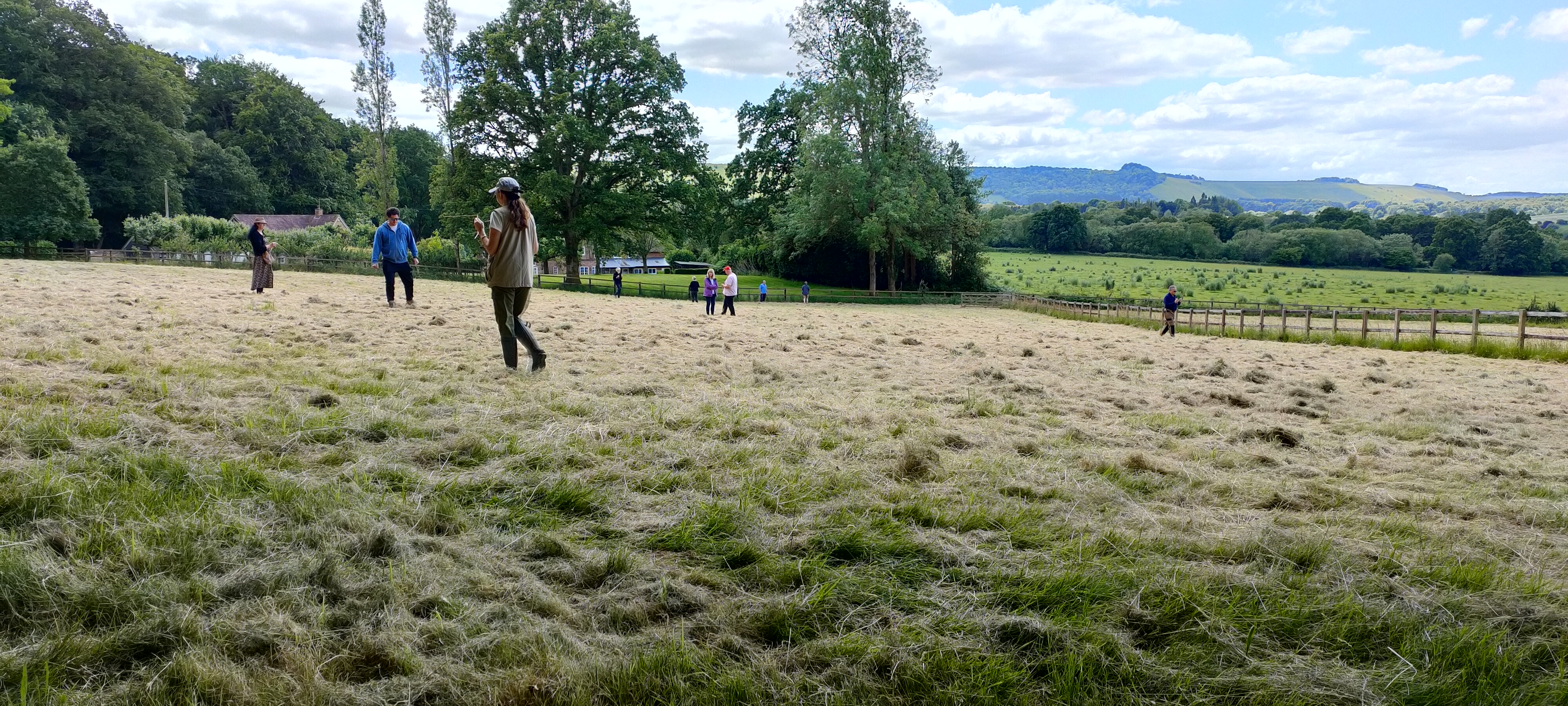

Dowsing is a controversial technique but it is
important to note that most of the UKs water companies use dowsers to
find water leaks. Whilst no-one offers a scientific basis for dowsing
it has many champions. We have decided to give it a go because it
allows anyone and everyone to engage with the land. It is very cheap
in terms of equipment and if we can find a basis for dowsing as an
alternative to traditional ground based geophysics, then that would be
ground breaking and very helpful to us.
Our first attempts are recorded here. This shows that we have a lot to learn if we are to make this work or make any sense of the results. All users were required to use the same metal rod type and to use the same or similar GPS app on their phones. It is clear that not all phones give the same result and different apps between different Apple and Android phones. We need to standardise our methodology and in particular our phone type. The use of flags instead of GPS will also be considered.
Our first attempts are recorded here. This shows that we have a lot to learn if we are to make this work or make any sense of the results. All users were required to use the same metal rod type and to use the same or similar GPS app on their phones. It is clear that not all phones give the same result and different apps between different Apple and Android phones. We need to standardise our methodology and in particular our phone type. The use of flags instead of GPS will also be considered.
We plan to use a digger at some point to check the validity of dowsing where we appear to have shown a high confidence from dowsing.
A site where future dowsing will take place has been identified and initial dowsing appears to show the position of a dwelling and well. Videos showing these are video1, and video 2. Use the VLC app or browser plug in to view these.
Digging
Finds of the Past
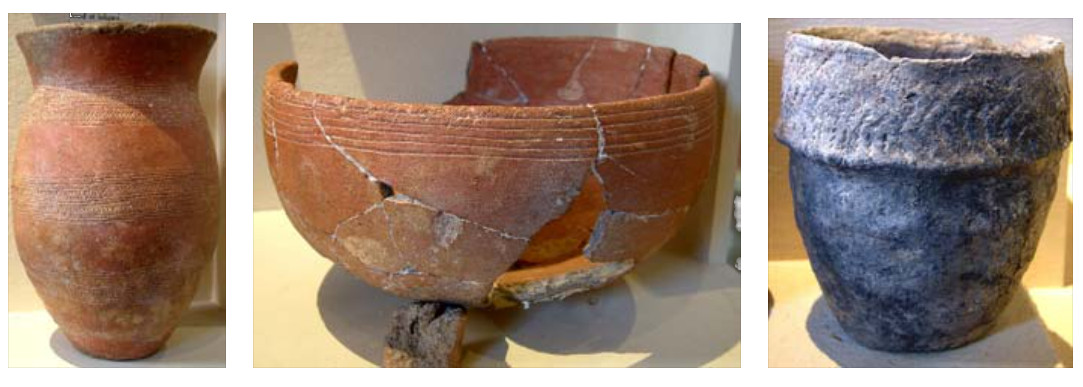
Craven Road - Beaker people pottery finds in Inkpen, at the Hungerford end of Craven Road, opposite Colnbrook copse and up here on the hills, date from as early as 3000BC. The pottery found isn't some jigsaw of scraps either. The clay pots are near intact and quite beautiful. They show skill and artistic design and now reside at the Newbury Museum. If you haven't already seen them, go and have a look, it will help you to get to know the people whose land you live on. Other early beaker people finds have been made close to the old saw mills at the end of Folly Road. These comprise flint tools, and evidence that suggests that they were manufactured near by.
The pottery finds at Craven Road, that's the left and centre photos shown below, were found in a layer of sand close to where the Ingeflod (an ancient brook) would have been. Those who are familiar with the Hungerford road during very wet weather will no doubt have experienced flooding at the bottom of the hill as you go out of Inkpen. Sometimes there's enough water to re-enact the meanderings of the Ingeflod through the fields to the northeast, just as it did during the time of the beaker people. It seems likely that beaker people lived around here, possibly in round houses and using the fertile soil for crops and livestock grazing. Back in 1908, some trenches were dug at Sadlers Farm (the site of a barrow which had been ploughed over). In these trenches were found a large quantity of animal bones and horns, and some human bones. Also some early or pre-Romano-British potsherds were found.
Joyce Uprichard's father found these pots - her memory of the event is here.
Walbury Hill - Also, there have been pottery finds at Walbury Hill, and Saxon coins or "sceattas" (treasure) have also been found there.
Some of our Finds

Craven Road - Beaker people pottery finds in Inkpen, at the Hungerford end of Craven Road, opposite Colnbrook copse and up here on the hills, date from as early as 3000BC. The pottery found isn't some jigsaw of scraps either. The clay pots are near intact and quite beautiful. They show skill and artistic design and now reside at the Newbury Museum. If you haven't already seen them, go and have a look, it will help you to get to know the people whose land you live on. Other early beaker people finds have been made close to the old saw mills at the end of Folly Road. These comprise flint tools, and evidence that suggests that they were manufactured near by.
The pottery finds at Craven Road, that's the left and centre photos shown below, were found in a layer of sand close to where the Ingeflod (an ancient brook) would have been. Those who are familiar with the Hungerford road during very wet weather will no doubt have experienced flooding at the bottom of the hill as you go out of Inkpen. Sometimes there's enough water to re-enact the meanderings of the Ingeflod through the fields to the northeast, just as it did during the time of the beaker people. It seems likely that beaker people lived around here, possibly in round houses and using the fertile soil for crops and livestock grazing. Back in 1908, some trenches were dug at Sadlers Farm (the site of a barrow which had been ploughed over). In these trenches were found a large quantity of animal bones and horns, and some human bones. Also some early or pre-Romano-British potsherds were found.
Joyce Uprichard's father found these pots - her memory of the event is here.
Walbury Hill - Also, there have been pottery finds at Walbury Hill, and Saxon coins or "sceattas" (treasure) have also been found there.
Some of our Finds
| Roman
Hypocaust Tiles Coordinates 51.368236, -1.489706 |
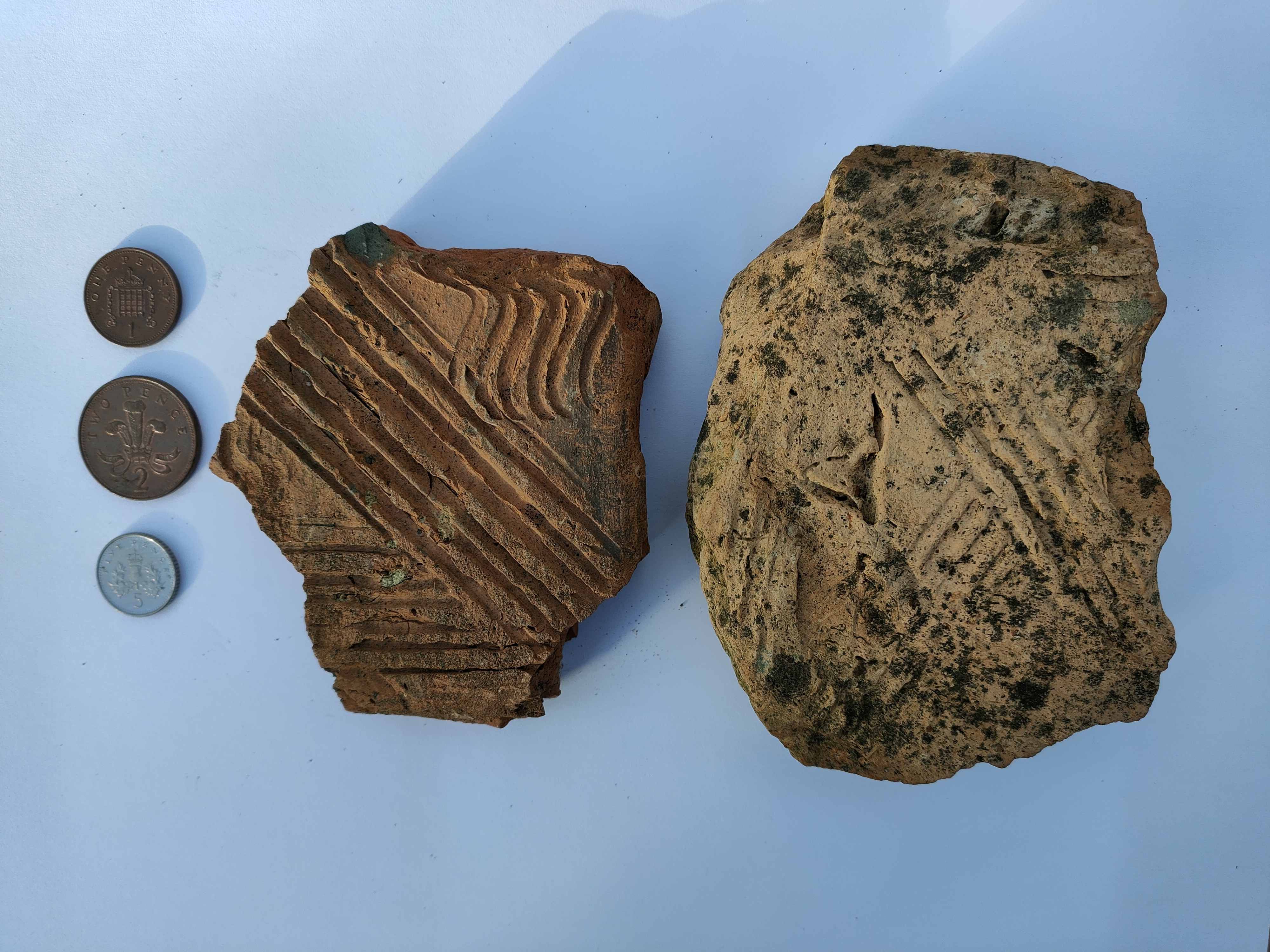 |
 |
Ladies
Purse Bar Part with the mark of St. Anthony (Egypt) Coordinates 51.372684, -1.485672 |
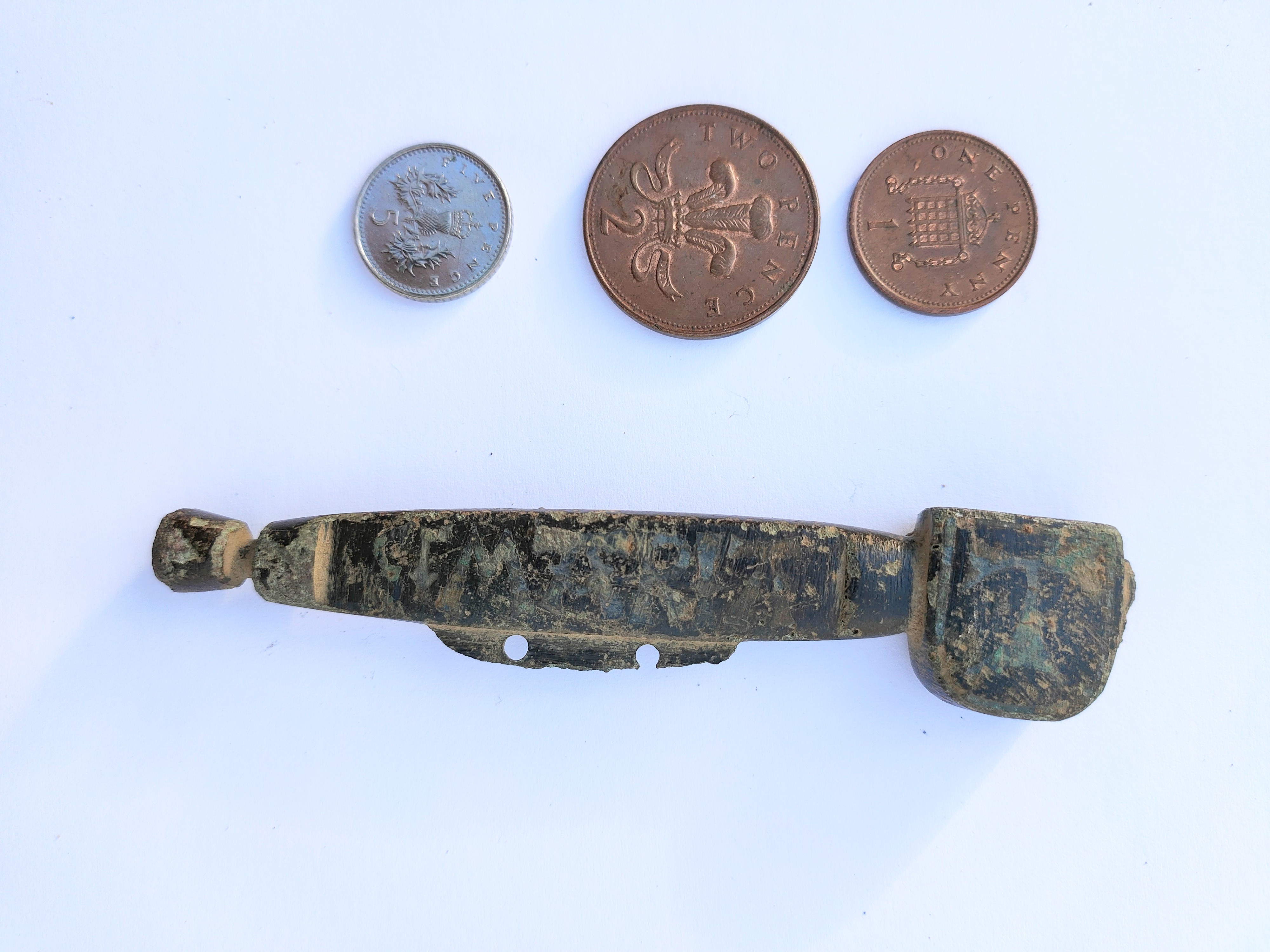 |
Obverse
of Purse Bar Part Find of the Month October 2022 |
| Lead
Ampulla - Holy Water Pilgrim Flask from Jerusalem Second or Third Crusade Coordinates 51.372657, -1.486016 |
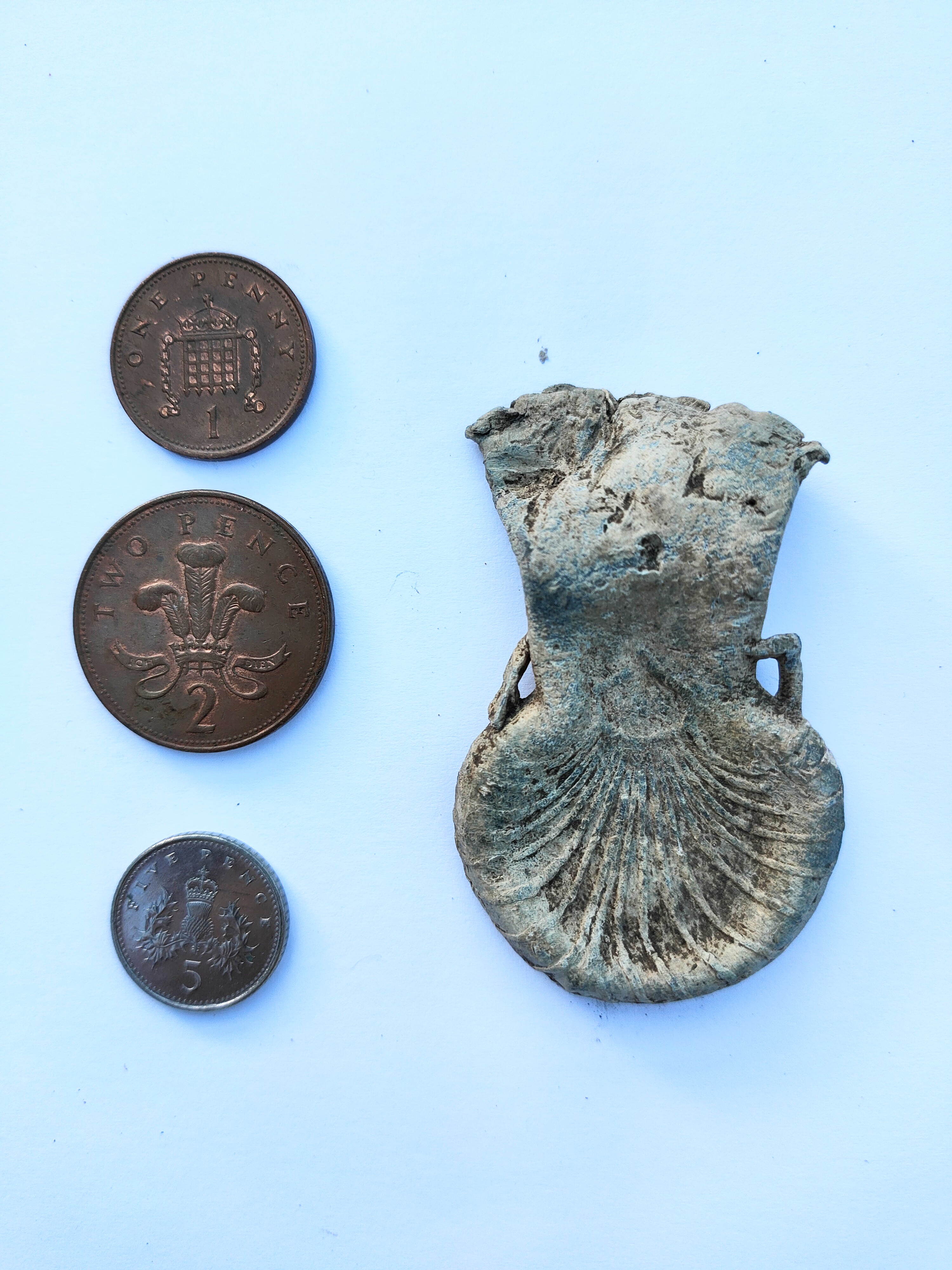 |
| Obverse
of Lead Ampulla |
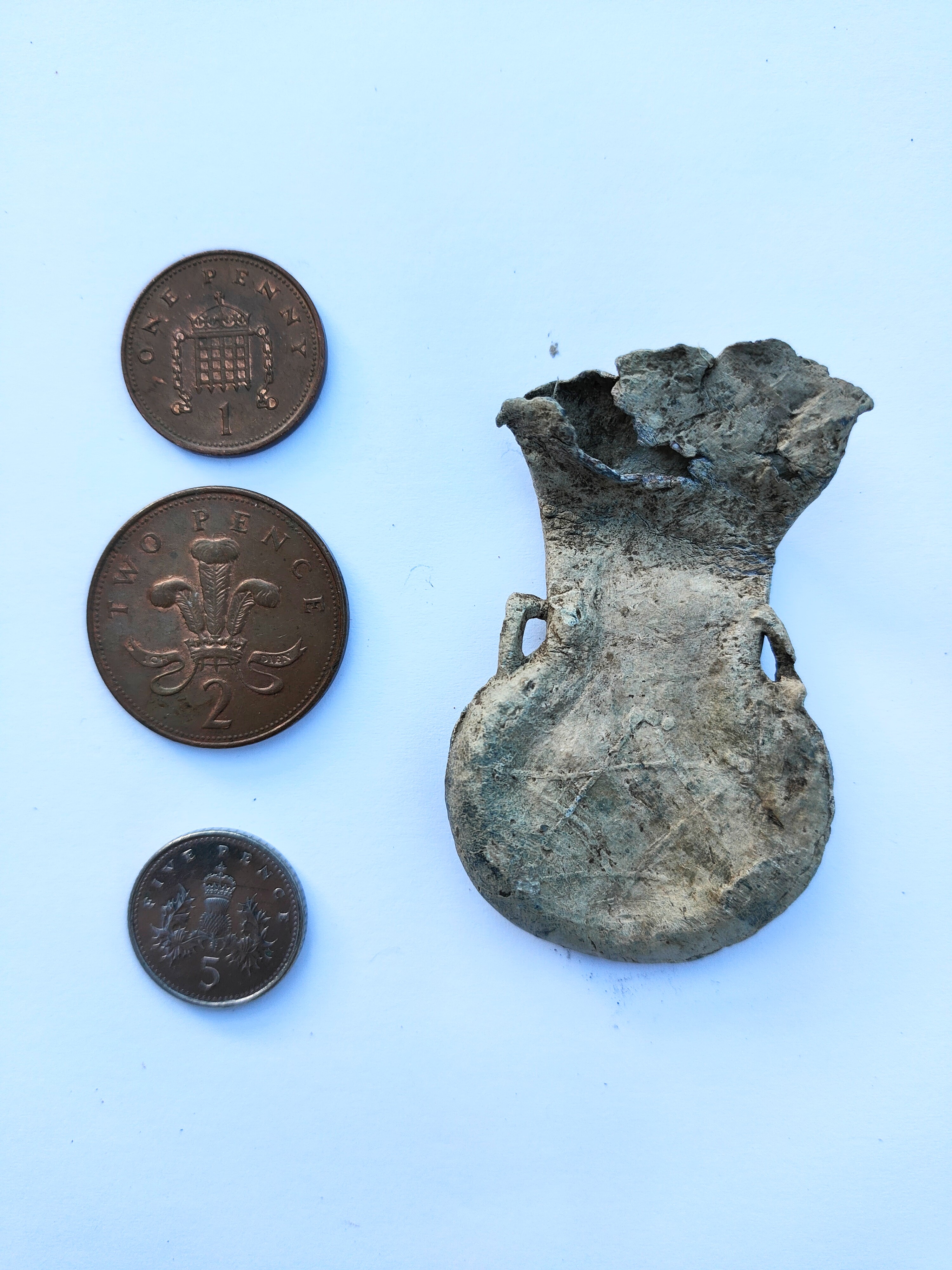 |
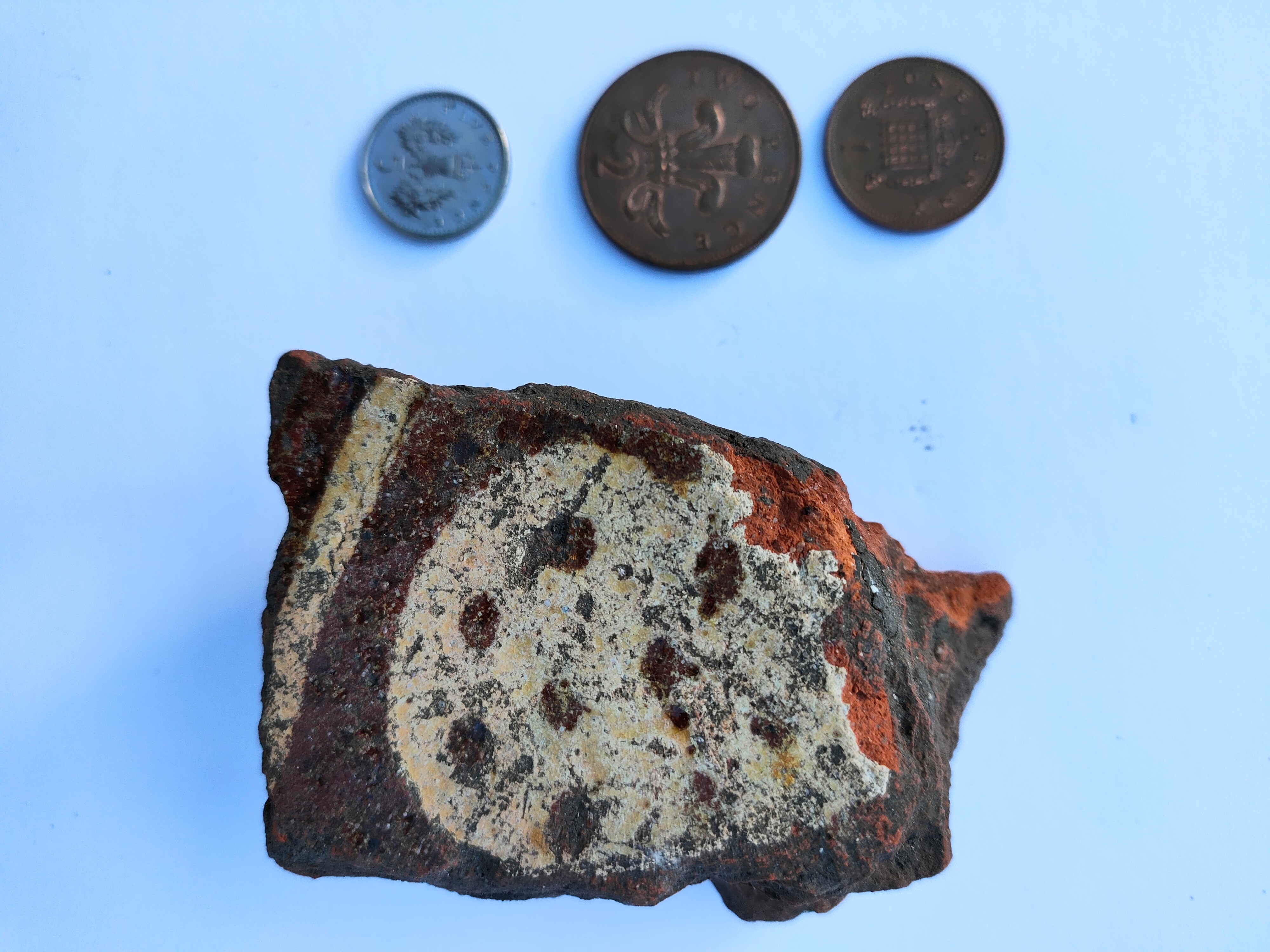 |
Glazed
Medieval Floor Tile Coordinates 51.372416, -1.486831 |
| Unglazed
Medieval Floor Tile Coordinates 51.372416, -1.486831 |
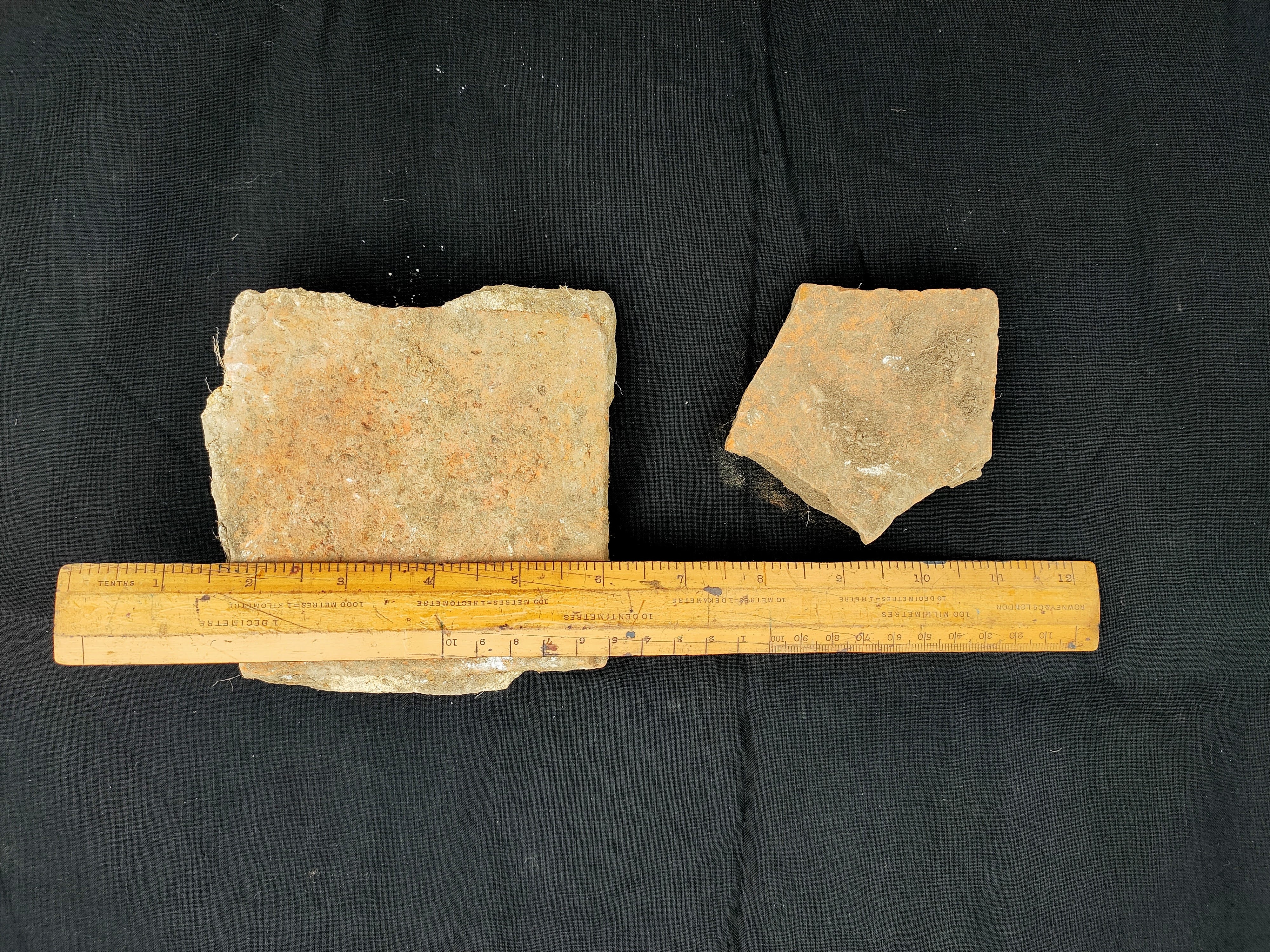 |
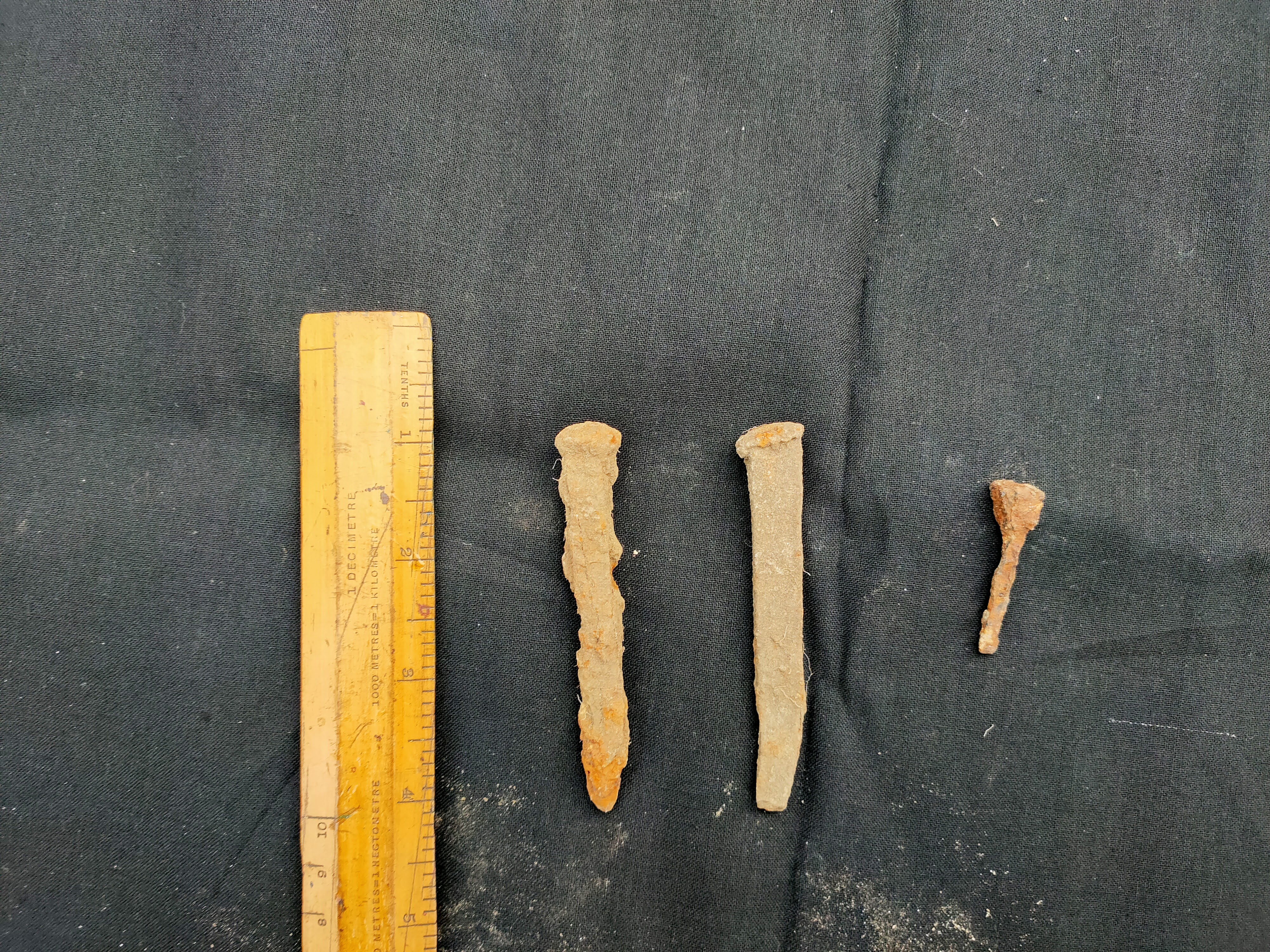 |
Cut
Nails - Various Nail-chronology |
| Unidentified
Item Bronze |
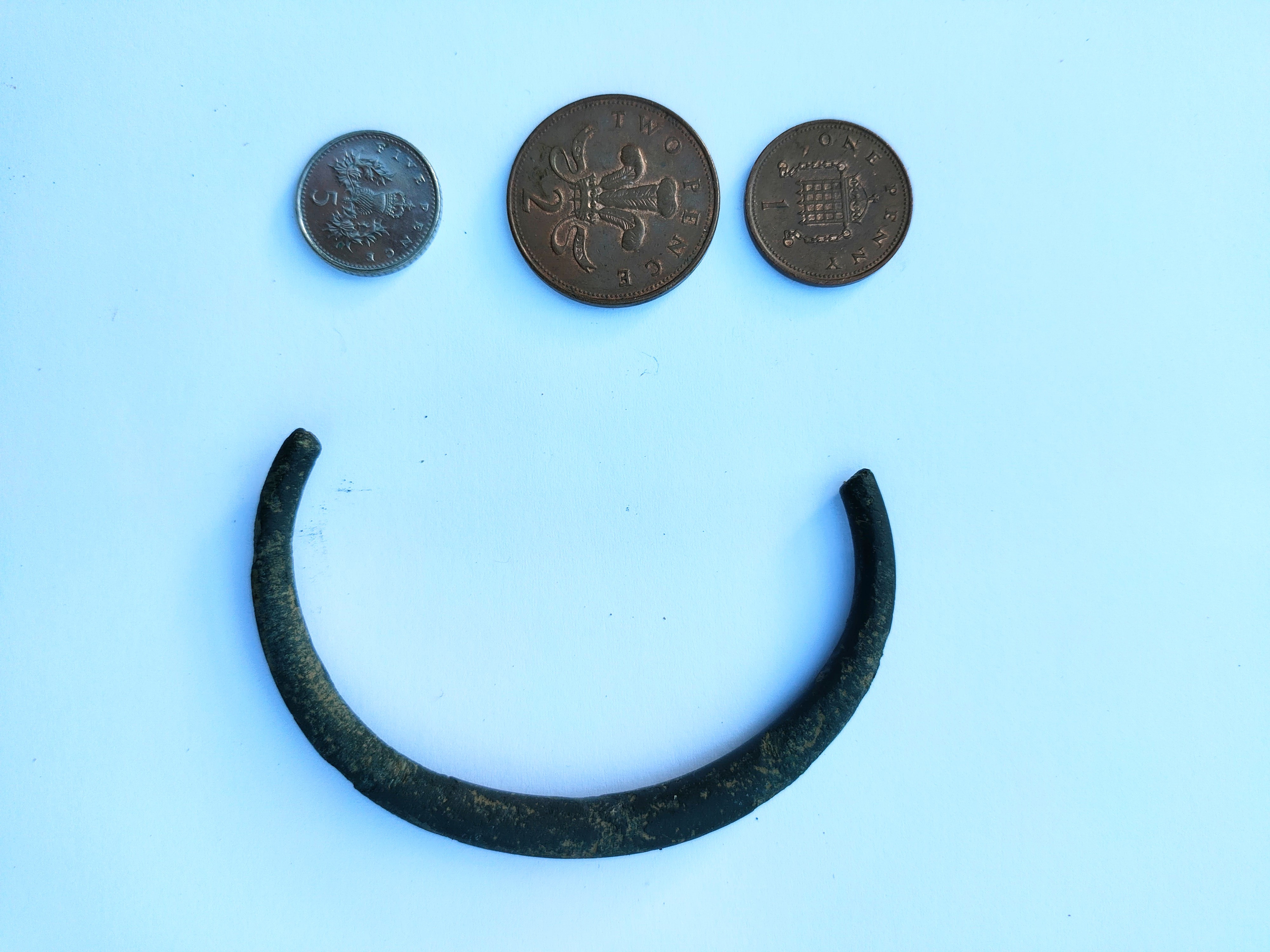 |
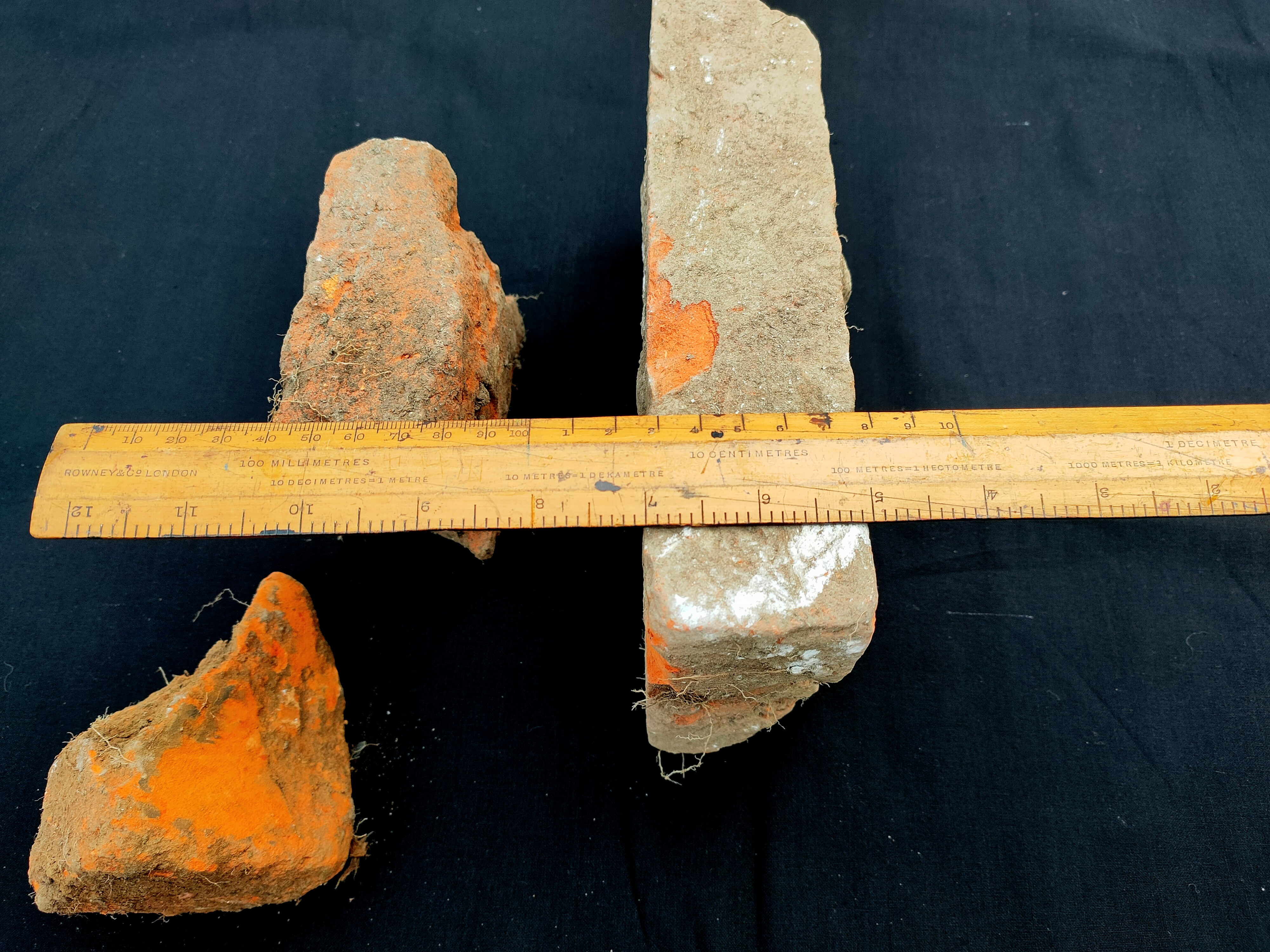 |
Late
Medieval Brick Fragments Dating Bricks |
 IHS
IHS